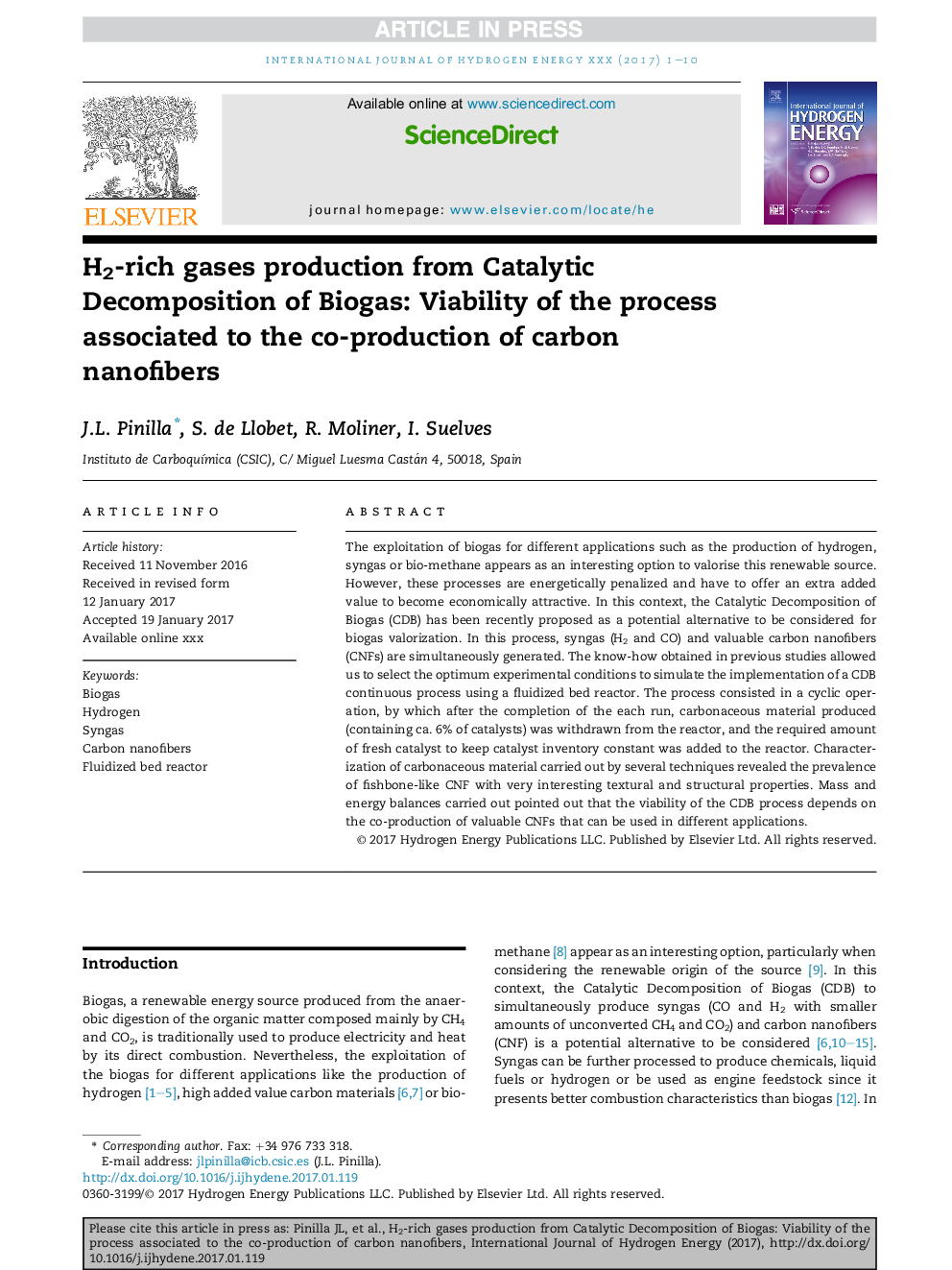| Article ID | Journal | Published Year | Pages | File Type |
|---|---|---|---|---|
| 5145517 | International Journal of Hydrogen Energy | 2017 | 10 Pages |
Abstract
The exploitation of biogas for different applications such as the production of hydrogen, syngas or bio-methane appears as an interesting option to valorise this renewable source. However, these processes are energetically penalized and have to offer an extra added value to become economically attractive. In this context, the Catalytic Decomposition of Biogas (CDB) has been recently proposed as a potential alternative to be considered for biogas valorization. In this process, syngas (H2 and CO) and valuable carbon nanofibers (CNFs) are simultaneously generated. The know-how obtained in previous studies allowed us to select the optimum experimental conditions to simulate the implementation of a CDB continuous process using a fluidized bed reactor. The process consisted in a cyclic operation, by which after the completion of the each run, carbonaceous material produced (containing ca. 6% of catalysts) was withdrawn from the reactor, and the required amount of fresh catalyst to keep catalyst inventory constant was added to the reactor. Characterization of carbonaceous material carried out by several techniques revealed the prevalence of fishbone-like CNF with very interesting textural and structural properties. Mass and energy balances carried out pointed out that the viability of the CDB process depends on the co-production of valuable CNFs that can be used in different applications.
Related Topics
Physical Sciences and Engineering
Chemistry
Electrochemistry
Authors
J.L. Pinilla, S. de Llobet, R. Moliner, I. Suelves,
